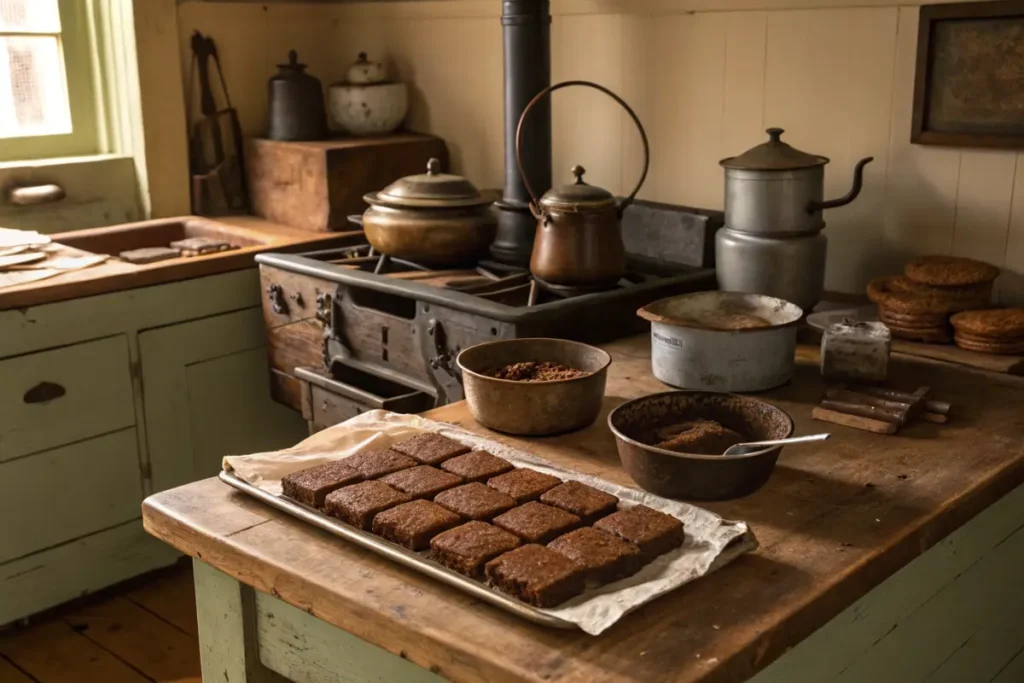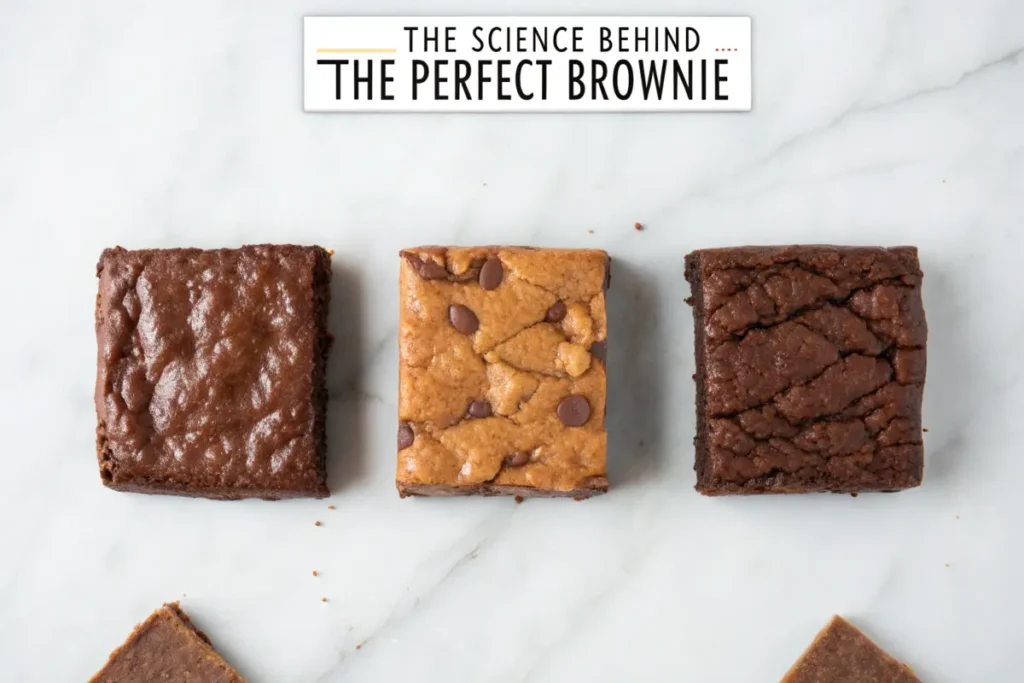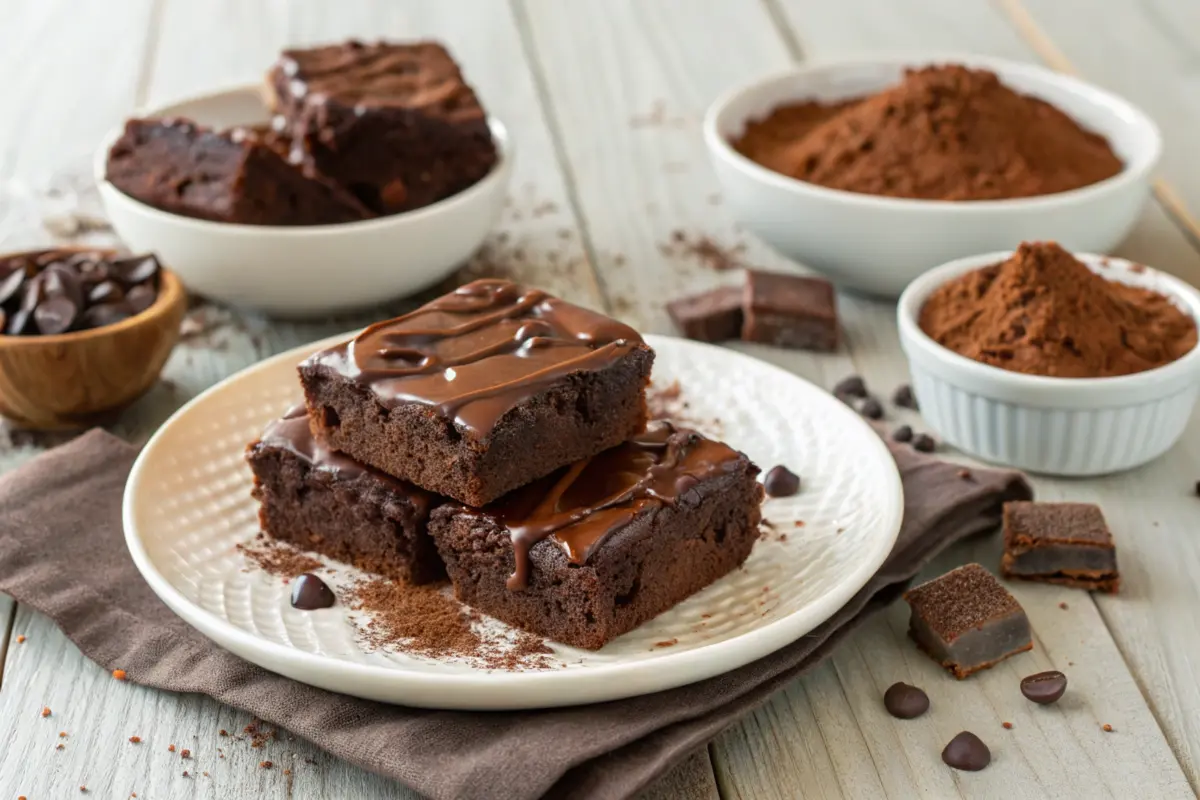Brownies are more than just a delicious dessert; they are a culinary icon. From their gooey chocolate goodness to their firm crust, brownies have charmed the taste buds of millions worldwide. But have you ever wondered where this iconic treat originated? This article delves into the fascinating history of brownies, tracing their journey from humble beginnings in the United States to their status as a global favorite. Along the way, we’ll explore their evolution, cultural significance, and modern-day adaptations.
Introduction to Brownies
What Makes Brownies Unique?
Brownies are a delightful blend of a cookie and a cake, combining the best of both worlds. They boast a rich, fudgy interior with a slightly crisp outer layer that crumbles just the right way. Whether served warm with a scoop of vanilla ice cream or as a quick grab-and-go snack, brownies are incredibly versatile. Their unique texture and deep chocolate flavor set them apart from other desserts.
But brownies aren’t just about taste. They symbolize comfort and indulgence. Unlike their more complex dessert counterparts, brownies are relatively simple to prepare, making them a favorite for home bakers and professionals alike.
Why Study the Origin of Brownies?
Understanding what is the origin of brownies adds a deeper appreciation for this beloved dessert. Their story is intertwined with innovation, cultural shifts, and changing palates over time. From a creative experiment in a Chicago kitchen to becoming a dessert staple worldwide, brownies embody culinary ingenuity.
Moreover, knowing their history answers intriguing questions like, “Why were brownies invented?” and “How did they gain such widespread popularity?” This knowledge not only enriches your baking adventures but also connects you to a fascinating slice of culinary history.
The Birthplace of Brownies

Where Were Brownies First Made?
The beloved brownie has its roots in the United States, specifically in Chicago. What is the origin of brownies, you ask? It begins in the late 19th century, when a woman named Bertha Palmer, a well-known Chicago socialite, requested a portable and delightful dessert for the 1893 World’s Columbian Exposition. Bertha’s request led to the creation of the first brownie, making Chicago the birthplace of this iconic treat.
This dessert’s initial concept was to combine the richness of a cake with the ease of handling a cookie. The pastry chef of the Palmer House, Joseph Sehl, achieved this balance by crafting a dense chocolate dessert with a glaze, creating the precursor to the modern brownie.
The Role of Bertha Palmer in Brownie History
Bertha Palmer’s role in the history of brownies was pivotal. She was more than a socialite; she was a trailblazer with an eye for innovation. Bertha didn’t want just any dessert—she wanted one that fit the needs of busy women who sought elegance and practicality.
Her vision shaped what became a staple in American desserts. The Palmer House brownie recipe remains legendary, even as the treat has evolved into various forms. The hotel still serves its version of this dessert, keeping a piece of culinary history alive.
First Recipes and Early Popularity
Brownies made their public debut in a Sears Roebuck catalog in 1898, marking the first written recipe for this treat. Initially, brownies didn’t include the heavy dose of chocolate we know today. Instead, they were more akin to a blondie with a subtle cocoa flavor.
However, the evolution of chocolate accessibility in the early 20th century revolutionized the recipe, paving the way for the fudgy and chocolatey variations we adore today. By the 1920s, brownies had cemented their place as an American household favorite, a status they’ve maintained ever since.
Evolution of Brownies Over Time
The Rise of Chocolate Accessibility
The evolution of brownies is closely tied to the increasing availability of chocolate. Before the early 20th century, chocolate was a luxury item. As industrial advancements made chocolate more affordable and accessible, recipes like brownies began incorporating this now-essential ingredient in larger quantities.
This shift turned brownies into a rich, fudgy dessert with widespread appeal. By the 1920s, brownies were gracing the tables of Americans nationwide, becoming synonymous with comfort and indulgence.
Variations on the Original Recipe
Over time, brownies diversified. From cakey to fudgy, the consistency of brownies became a personal preference. Some added nuts for texture, while others experimented with swirls of cream cheese or caramel. Blondies, a cousin to the brownie made without cocoa, emerged as another popular variation.
The modern brownie renaissance has given us gourmet versions with ingredients like sea salt, espresso, and even bacon. Each variation reflects the creativity and adaptability of this dessert.
The Global Spread of Brownies
As brownies gained popularity in the U.S., their fame began to spread worldwide. Today, brownies can be found in nearly every corner of the globe, with each culture adding its unique twist. Whether served as a sweet treat in Japan or paired with ice cream in France, brownies have transcended borders.
Incorporating diverse ingredients like matcha, tahini, or tropical fruits, global adaptations have further enriched the brownie’s legacy. This versatility ensures that brownies remain a global dessert phenomenon for generations to come.
Cultural Significance of Brownies
Brownies in American Culinary Traditions
Brownies hold a special place in American culinary traditions. As one of the first desserts to blend cake and cookie characteristics, they’re a symbol of innovation in the kitchen. From school bake sales to holiday gatherings, brownies are a quintessential treat that brings people together.
They’re also associated with simplicity and comfort. Unlike elaborate desserts requiring specialized techniques, brownies are straightforward to make, offering both seasoned bakers and beginners a chance to succeed. Their consistent presence in family recipes reflects the enduring appeal of this chocolate indulgence.
Symbolism in Desserts and Comfort Food
Desserts, like brownies, often symbolize joy, warmth, and togetherness. When asking what is the origin of brownies, it’s clear that their purpose was rooted in practicality and delight. Brownies were designed to be both portable and satisfying, making them perfect for picnics, parties, and lunchboxes.
As a comfort food, brownies shine in moments of celebration and solace alike. Their rich texture and deep flavor evoke feelings of nostalgia, while their adaptability—whether plain or adorned with toppings—ensures they remain relevant in modern times.
For more comforting dessert ideas, check out our recipe article on the two main types of brownies: fudgy and cakey. It’s a great resource for choosing the perfect brownie style for your next gathering!
Modern-Day Variations and Adaptations
Vegan, Gluten-Free, and Health-Conscious Brownies
The modern culinary world has embraced brownies with a focus on inclusivity. For those with dietary restrictions, vegan and gluten-free brownies offer a way to enjoy this classic dessert. Substitutions like flaxseed for eggs or almond flour for wheat ensure that everyone can indulge without compromise.
Health-conscious bakers have also joined the brownie revolution, crafting recipes that incorporate avocado, zucchini, or even black beans to add nutrients without sacrificing taste. These innovative twists highlight how adaptable brownies can be.
The Role of Technology in Recipe Sharing
Technology has played a major role in popularizing brownie variations. Social media platforms are brimming with creative recipes, from skillet brownies to decadent brownie cheesecakes. Video tutorials and food blogs make it easier than ever to experiment with new techniques and ingredients.
This widespread sharing has fostered a sense of community among dessert lovers, connecting people over their shared love of chocolate. Whether it’s a viral trend or a classic recipe, brownies continue to evolve as bakers worldwide put their unique spin on the dessert.
Brownies in Pop Culture
Brownies aren’t just a favorite treat; they’re a cultural icon. From starring in cookbooks to appearing in countless TV shows and movies, they’ve become a symbol of indulgence and celebration. Their versatile nature ensures that they remain a favorite, whether as a simple after-school snack or an elegant dessert at a dinner party.
If you’re inspired to try new variations, consider reading our article on what are brookies made of—a delightful hybrid of brownies and cookies that’s sure to impress!
FAQs: People Also Ask
Where Did the Term “Brownie” Originate?
The term “brownie” likely comes from its deep brown color, reflecting the use of chocolate. Early brownie recipes didn’t always include chocolate, yet the name emphasized their earthy, rich tone. Some speculate the name might also relate to “brownies” from folklore, known as tiny, delightful helpers.
Why Were Brownies Invented?
Brownies were created out of necessity. In 1893, Bertha Palmer requested a portable, non-messy dessert for guests at the World’s Fair in Chicago. Her pastry chef’s creation combined cake-like and cookie-like qualities, producing the first known version of brownies. This practical and tasty invention quickly gained popularity, solidifying its place in culinary history.
What Makes Brownies Unique from Cake?
Brownies stand out from cake due to their dense, fudgy texture. Cakes are lighter and fluffier, relying on more flour and leavening agents. In contrast, brownies use higher ratios of butter and chocolate, giving them their signature richness and slightly chewy consistency.
How Did Brownies Gain Global Popularity?
After their introduction, brownies spread beyond the U.S. through cookbooks and evolving recipes. Their simplicity and versatility helped them win hearts worldwide. Whether enjoyed plain or with creative toppings, brownies became a global sensation, inspiring countless adaptations.
For more creative ideas, explore our slutty brownie recipe for a unique twist on this classic treat!
Conclusion and Takeaway
Reflecting on the Legacy of Brownies
When asking what is the origin of brownies, we uncover a rich history filled with creativity and innovation. From their beginnings as a practical dessert for high-society events to their current status as a global favorite, brownies have traveled a remarkable journey. Their appeal lies not only in their taste but also in their ability to adapt and evolve.
The Future of Brownies in Culinary Arts
As new techniques and ingredients emerge, brownies will continue to inspire creativity in kitchens worldwide. With endless variations, from health-focused recipes to indulgent gourmet creations, the possibilities are limitless. Brownies remain a testament to how simple ideas can lead to extraordinary culinary achievements.
Let’s keep exploring and sharing the magic of brownies, whether sticking to tradition or experimenting with bold new flavors! For more delicious brownie recipes and tips, don’t miss our collection of dessert ideas.
The Science Behind the Perfect Brownie

What Makes a Brownie Fudgy, Cakey, or Chewy?
The texture of a brownie—whether it’s fudgy, cakey, or chewy—depends on the ratio of ingredients. A fudgy brownie has a higher fat-to-flour ratio, using more butter or chocolate. A cakey brownie relies on more flour and baking powder, creating a lighter, fluffier texture. Chewy brownies find a middle ground, often achieved by adding brown sugar or extra eggs for elasticity.
These variations allow bakers to tailor their brownies to personal preferences, making the dessert even more versatile. Whether you prefer the indulgence of a fudgy brownie or the lightness of a cake-like texture, the science behind baking is at the heart of achieving the perfect result.
The Role of Ingredients and Techniques
The magic of brownies lies in the balance of ingredients. Butter adds richness, sugar sweetens and enhances moisture, and eggs bind everything together. Meanwhile, cocoa powder or melted chocolate determines the depth of flavor.
Baking time and temperature also play key roles. A shorter bake at a higher temperature results in a gooier center, while longer, slower baking creates a denser texture. The method of mixing—whether beating for a smoother consistency or folding for a denser result—also influences the final outcome.
These elements, when combined, give brownies their distinct identity and highlight why they’ve remained a beloved dessert for over a century.
Brownies in a Digital Age
How Social Media Shapes Brownie Trends
Social media platforms like Instagram, TikTok, and Pinterest have transformed how we share and discover recipes. Viral brownie trends, such as brookies (a brownie-cookie hybrid) or slutty brownies, have captured the imagination of bakers around the world. These creative twists showcase the adaptability of brownies, offering endless inspiration.
With the rise of video tutorials, even novice bakers can recreate complex recipes. This accessibility has fueled the popularity of brownies, keeping them relevant in an age of constant culinary innovation.
The Global Brownie Community
The digital age has created a global community of brownie enthusiasts. Bloggers, influencers, and home bakers share tips, tricks, and recipes, uniting people through their shared love for this iconic dessert. Questions like “What is the origin of brownies?” spark lively discussions, reminding us of the deep connection between food and culture.
Online platforms also encourage experimentation, with bakers adding local ingredients to create unique variations. This blending of global and local traditions ensures that brownies remain a dynamic and evolving dessert, cherished by all.
If you’re curious about more creative recipes, explore our article on brookies for a delightful combination of brownies and cookies.

